Pests With Benefits: Give these critters a second chance
Just like many garden flora have a reputation as "weeds," certain fauna are often labeled as "garden pests." Some are vehemently accused of damaging our plants or wreaking havoc in our lawns. Some may pack a nasty bite or sting we can't forget. A few unwelcome guests might even get a little too cozy in our homes. Still other common garden creatures simply annoy us, startle us, or just plain creep us out.
But, could it be possible that at least some of the garden "pests" sharing our space might deserve another chance? We ask that you suspend disbelief, as we share some of the many misunderstood bugs and animals out there. If you ask us, some of these guys truly just need better publicists!
More Good than Harm
It’s true that some of these creatures come with perhaps not-so-charming quirks. But a gardener might decide putting up with those challenges is worth it after all once they understand how much good they do.
And then there are the innocent victims of our fear of creepy-crawlies — the ones who only ever helped us, but we squished them, poisoned them, or shunned them all the same. Surely at least these would-be allies deserve exoneration?
We’re making the case for showing these underrated creatures a little more love.
CATERPILLARS
BEASTS TO BEAUTIES
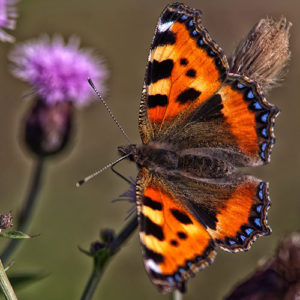 Yes, they eat plants. But indiscriminate loathing of caterpillars is a pretty confusing phenomenon, given that most everyone loves butterflies. Sorry folks, but the truth is that we can’t have adult butterflies if we kill all their babies. Besides being a delight to look at, both butterflies and moths are important pollinators.
Yes, they eat plants. But indiscriminate loathing of caterpillars is a pretty confusing phenomenon, given that most everyone loves butterflies. Sorry folks, but the truth is that we can’t have adult butterflies if we kill all their babies. Besides being a delight to look at, both butterflies and moths are important pollinators.
Besides, in an ecosystem, somebody has to eat the plants. It’s true! At a basic level, food chains have a few levels. Plants create food. Herbivores eat plants directly. And carnivores or omnivores eat the herbivores.
Know who eats a lot of caterpillars? Songbirds do. And gardeners tend to love birds at least as much as they love butterflies. The more caterpillars munching away on plants in your garden, the more feathered friends you’re likely to see.
Isn’t a garden full of brightly fluttering butterflies and birds worth the occasional ragged leaf?
"In an ecosystem, somebody has to eat the plants."
SPIDERS
8 LEGGED FRIENDS
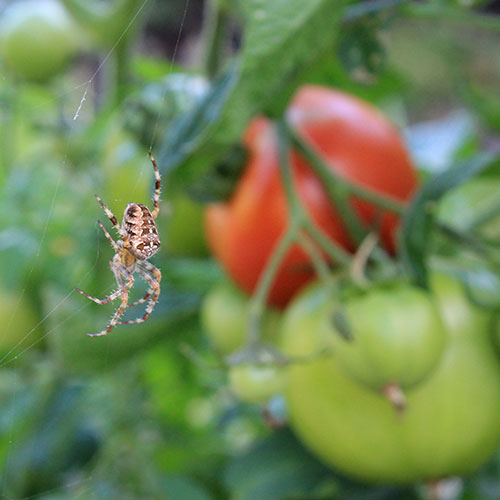
Is it fun accidentally walking through a spider’s web, or suddenly discovering a large arachnid on your person? No, those are admittedly not among our favorite gardening experiences. But we would gladly suffer the occasional "spider web-freakout-dance" than miss out on all the excellent pest-control that spiders provide.
Although there are spiders that pose a serious threat to humans, they don’t live here in the Pacific Northwest. A bite from the rare black widow or yellow sac spider, could warrant medical treatment. But this is only if you are allergic or especially vulnerable, and most people are not at risk. In fact, almost all of the spiders you’re likely to encounter in the garden are completely harmless to humans. Remember: even the rare venomous spiders don't sit around waiting to bite us. As long as we give them their space, they’d certainly prefer to avoid us too!
Collectively, spiders consume at least 400 million tons of insects each year. That’s about on par with how much meat humans eat. Pretty impressive, for such tiny predators! This means that in our gardens, they do a lot of heavy lifting to help control all kinds of actual pests, from cabbage moths to leaf miners.
So, it’s up to you: Would you rather accept sharing your garden with spider friends, or deal with all those pests they eat yourself?
"Collectively, spiders consume at least 400 million tons of insects each year."
WASPS & HORNETS
BLACK AND GOLD BACKUP
As many of us know from experience, yellow jacket wasps and bald-faced hornets are not joking around when it comes to defending their nests. Plus, they make obnoxious picnic guests. But despite their less appealing qualities, wasps and hornets do a lot to help us out.
First, let’s clear up some confusion: wasps and hornets are not the same as bees. Yellow jackets in particular are sometimes mis-identified as bees because of their yellow and black stripes. But you can tell wasps and hornets apart from their bee cousins by their pinched-looking waists and nearly-hairless bodies.
It’s also not really fair to lump all wasps and hornets together. While yellow jackets and bald-faced hornets are known for their large colonies and assertive attitudes, plenty of other wasps are much more demure. Many of them live alone and are either too small to hurt humans at all or too shy to sting unless they’re directly threatened.
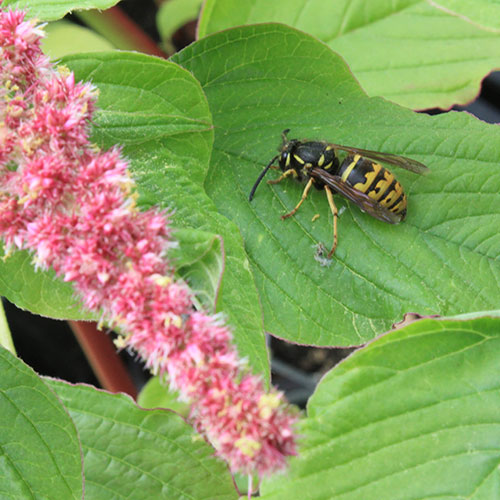
Regardless of their lifestyles, most wasps and hornets benefit gardeners as both pollinators and predators. Adult wasps and hornets generally rely on sugar, including nectar, to feed themselves. If you get close enough to watch, you’ll see them visiting all kinds of flowers (and maybe the juicy watermelon at your cookout too). But unlike bee larvae, wasp and hornet larvae eat meat. After she pollinates a few flowers, your wasp friend might just grab a whole cabbage moth caterpillar off of your kale plants — a nice takeout dinner for her baby siblings.
"Adult wasps and hornets generally rely on sugar, including nectar, to feed themselves."
EARWIGS
GARDEN UNDERDOGS
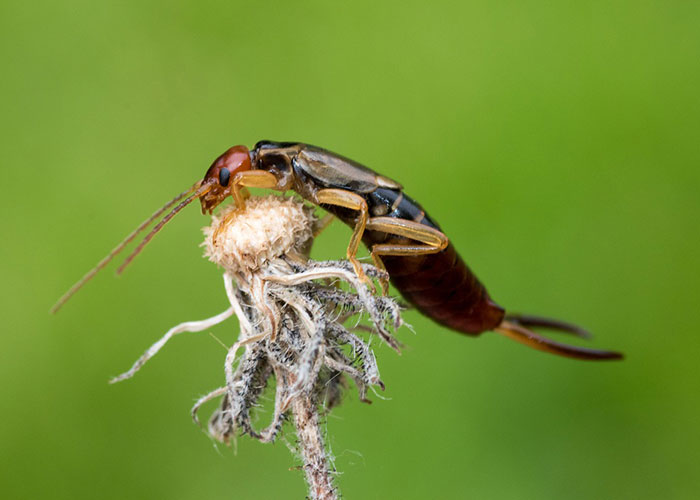 No, they will not crawl in your ears while you’re sleeping. Contrary to popular belief, they’re also rather unlikely to harm your plants. And while they can pinch, they aren’t venomous or aggressive. However, they do the valuable work of recycling dead stuff into plant nutrients, and they snack on pests!
No, they will not crawl in your ears while you’re sleeping. Contrary to popular belief, they’re also rather unlikely to harm your plants. And while they can pinch, they aren’t venomous or aggressive. However, they do the valuable work of recycling dead stuff into plant nutrients, and they snack on pests!
Earwigs are opportunists. While it’s true that they might occasionally nibble on your crops, they very rarely do significant damage. But they would much prefer different cuisine. They prefer decaying matter, which is good for your plants because earwigs can help turn dead leaves or fallen fruit into nutrients they can use again. An earwig’s absolute favorite meal consists of soft-bodied garden pests like aphids and small slugs. It’s usually only when these delicacies aren’t available that they’ll resort to the salad bar.
So, earwigs are much more likely to benefit your garden than to harm it. To maximize their benefits and discourage their less charming behavior, maintain a diverse garden ecosystem where plenty of rotting stuff and insect snacks abound.
By the way, centipedes, millipedes, and potato bugs are in a similar boat. While these garden neighbors are also blamed for plant damage, they are all much more likely to be helpful than harmful. Millipedes and potato bugs mostly eat decaying matter, and centipedes are predators.
"No, they will not crawl in your ears while you’re sleeping."
MOLES
ADORABLE LOW-COST SOIL AERATORS
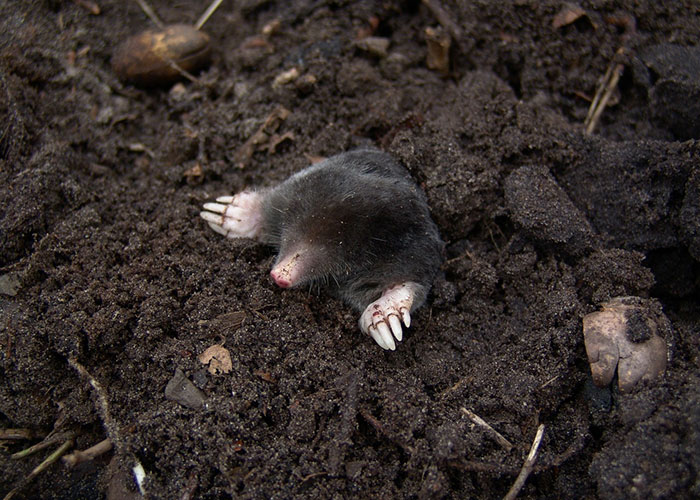 Okay, this one might be a hard sell for some. But hear us out: moles eat pests, and they’re living soil aerators. Unlike voles and gophers, moles don’t want to eat your plants.
Okay, this one might be a hard sell for some. But hear us out: moles eat pests, and they’re living soil aerators. Unlike voles and gophers, moles don’t want to eat your plants.
These fluffy little ground pillows hunt by digging tunnels just under the surface of the soil, then patrolling them for grubs, snails, and other tasty treats that might make use of or fall into their tunnels. They can inadvertently disturb your plants or cover small seedlings as they dig these tunnels, but it’s not your plants they’re after.
Once a tunnel is built, they just leave it there and let it collect snacks. That means that you can uncover any seedlings and pat any uprooted plants back into place without fear of them being disturbed again anytime soon. The same goes for simply raking or kicking down mole-hills.
In the meantime, they’re eating all kinds of soil-dwelling pests, and they’re creating spaces in the soil. Despite a little temporary root disturbance, that’s good for your garden in the long run because healthy soil needs spaces for air and water to flow through.
Besides, moles are survivors. Getting rid of them is extremely difficult, and likely to be temporary even if you have any initial success. There's a reason this type of creature evolved, so maybe it’s worth working with them instead of against them.
"They’re eating all kinds of soil-dwelling pests, and they’re creating spaces in the soil."
GARTER SNAKES
WIGGLY WONDERS
Here’s a pure and true garden friend who has been wrongfully maligned. While some people may not like the look of them, garter snakes are nothing but harmless to humans, and nothing but helpful to have around.
Garter snakes eat all kinds of pests in the garden that can be hard to get rid of, from slugs and snails to rats. If you see them in your garden, it’s a great sign that you’ve succeeded in creating a thriving ecosystem. Well done!
There are no snakes that are dangerous to humans in Western Washington, so there’s no risk in creating a snake-friendly garden to welcome these helpful creatures. Garter snakes are shy souls, and will actively avoid people and pets. Even if someone managed to get too close and receive a rare defensive nip, garter snake venom is not dangerous to humans.
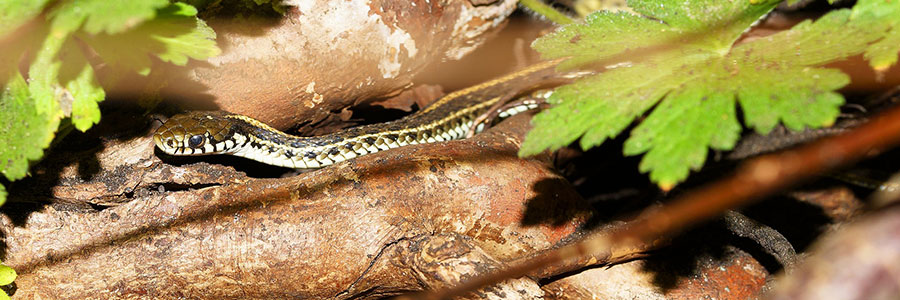
"Garter snakes eat all kinds of pests that can be hard to get rid of..."
BATS
THE GARDENER'S NIGHT WATCH
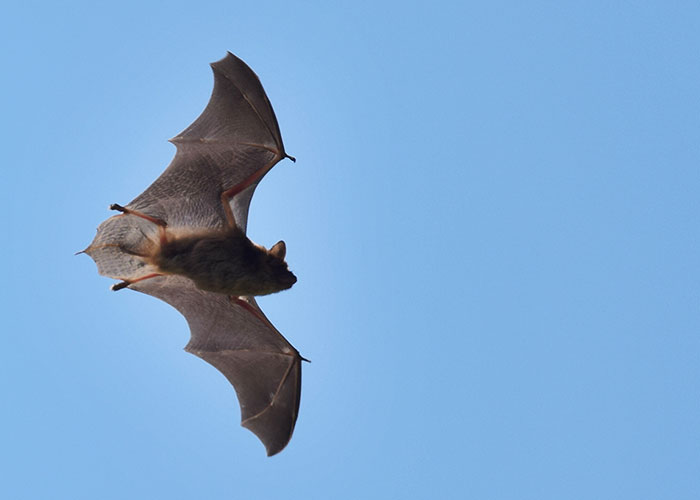 Here’s another beneficial animal that doesn’t deserve to be labeled a “pest” at all, but still sometimes gets slapped with a bad reputation.
Here’s another beneficial animal that doesn’t deserve to be labeled a “pest” at all, but still sometimes gets slapped with a bad reputation.
Bats are no more likely to carry transmissible diseases than any other animal. It’s also extremely unlikely that they would ever transmit a disease to a human, since they are shy, nocturnal, and usually either sleeping or flying. (How many of us would love that lifestyle?) Even vampire bats don’t often bite humans… and they only live in the tropics of Central and South America.
Our PNW bats exclusively eat bugs. And they eat a lot of them! A common little brown bat eats half of its own body weight every night. By picking up the night shift, bats help control pests like mosquitoes that evade daytime predators.
They also know where you are, and will avoid running into you. Not only do they have better eyesight than most people think, but if they can use echolocation to pinpoint a mosquito in mid-flight, they can definitely avoid getting tangled in your hair.
If anything, we need to do our part to protect bats. We can leave up any safe dead trees in our yards, and refrain from using pesticides so that their food sources will stay safe for them to eat.
"A common little brown bat eats half of its own body weight every night."
Embrace the (Whole) Ecosystem
There’s a good reason why ecological gardening is such a growing trend. Besides being a great way to give back and do our part, working with nature instead of against it can also be a huge relief.
Rather than stressing about holes in our leaves, we could enjoy learning about the caterpillars we find and what kinds of butterflies or moths they might turn into. Rather than fighting an endless battle against moles, we could thank them for their services while gently replanting the occasional uprooted shrub.
It might take a mindset shift for some, but embracing the whole garden ecosystem — creepy-crawlies and all — can open the door to enjoying your garden in a whole new way.
Writing & Research by Toby Madrone
Editing & Design by Sarah Oakes
